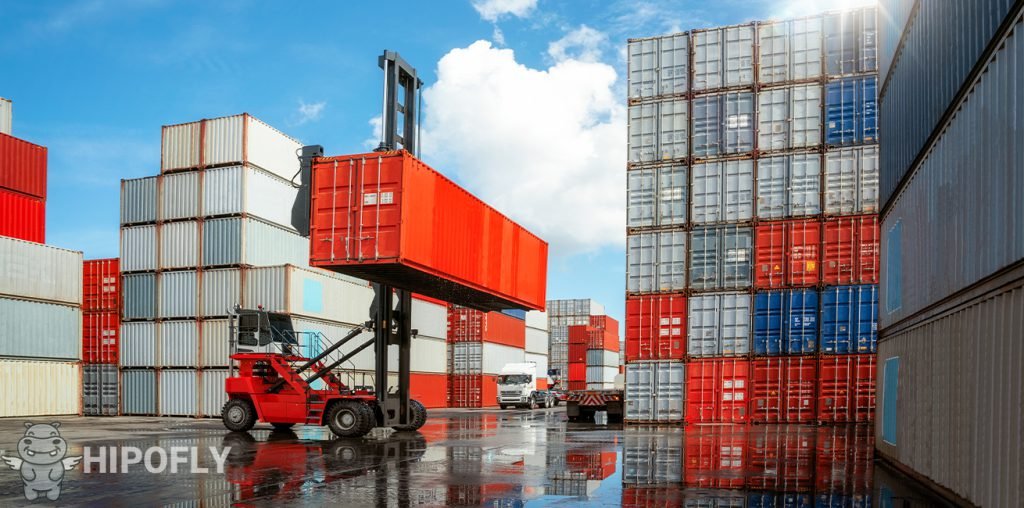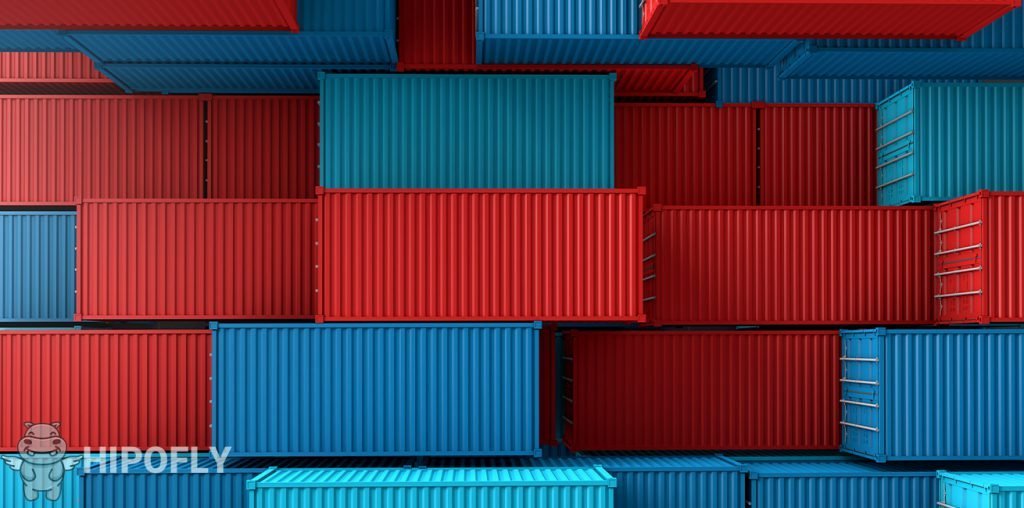Introduction
When it comes to importing or exporting goods, many companies worldwide don’t know if they should use sea or rail transport. When we ship our goods by sea, like from China, or by train to European countries, we must decide between FCL transportation and LCL transportation. Considering the size, weight, and several goods, we can determine whether a full container or an ultimate load is the best way to ship them. In this article, Hipofly will tell you many valuable things about these subjects.
What is the Difference Between LCL and FCL Transportations in China?
However, sea imports from China require a waiting period. The cargo should arrive 30 days after the ship leaves port. Clients receive a discount on ship freight. FCL transportation and LCL transportation are generally chosen based on load size and the sender company’s finances. Many transport businesses load containers in customer-specified locations and transport containers door-to-door or port-to-port.

what is FCL(Full Container Load)?
FCL stands for “Full Container Load.” This means that the container is full. Larger businesses choose this mode of transport. We discuss this rule when only one sender or receiver uses the whole container. Also, it is a good choice for carrying larger loads, which are often too big for smaller vehicles. In this case, we buy their container, even if we don’t use all of its surface area or storage space.
what is LCL(Less than Container Load)?
Less Container Load, or LCL transportation, is called “general cargo,” which means moving more miniature goods in smaller amounts. We only use part of the container here, and other companies’ shipments share the rest of the space. Business owners more often choose smaller imports. For example, when we buy small amounts of goods at different times and places, we choose this option. Most of the time, it’s used to move up to 12 tons. Also, the costs of this kind of freight depend on its weight and size. For this kind of shipping, the port is a consolidation warehouse, which is in charge of loading loads for different receivers and then sending the container to the final port. You have to wait about two weeks longer than with FCL transportation.
Container types
When it comes to choosing containers, we have a lot of different sizes to choose from. Here are some examples:
- Containers that can be used for anything (dry containers)
- Standardized containers that are taller (high cube dry containers)
- The tops are open
- open-top and side containers (flat rack containers)
- refrigeration (reefer containers)
- container platform
- garment containers for garments (garments on hangers container)
Depending on the volume and weight of the loading, containers are chosen. Many Chinese businesses make goods in the volume that has been specified due to container data limits. Because freighters sail in line with precise distribution, all transports can be arranged well before execution. These ships only make port calls to the busiest ports in Europe before being reloaded onto smaller vessels and sent sailing.
How Does the Chinese Customs Work for LCL and FCL Transports in China?
When it comes to carrying products in China, the Chinese custom is a significant component to consider because it specifies the mode of transportation that should be utilized for each category of commodities based on the weight and dimensions of those goods.
The so-called “Eight Customs” are typically broken into two groups of four customs each. Each of the three sets of customs deals with different modes of transportation: land, sea, and hipofly.com/air-freight-from-china/">air freight, respectively; The following are the four regulations that relate to land transportation that make up a set: For goods that are transported over land, a shopping trolley or another similar device is used to transport the goods; for goods that are transported by horse-drawn carriage, there must be space for carrying regulations. 1) For goods that are transported over land, there is no need for a specific type of transport 2) for goods that are transported by boat or river boat, their weight and size must be restricted; therefore, certain types of boats are used 3) for goods that are transported by land, there is no need for a specific type of When carrying goods that have wings, they are required to be contained within cages or bags before shipment; for flammable materials, the set of six customs includes the following provisions:
Before you can get your cargo, it must go through Chinese customs, just like any other international shipment. You must prepare the paperwork and clearance requirements for a smooth transaction with local businesses. These include:
Commercial invoice, packing list, letter of credit, certificate of origin, or other terms of payment (depends on the contract between the parties involved)
Bill of Lading is used for ocean freight. For shipping by air: Airway Bill
Chinese customs may need other papers. We have a list of documents you can look at to help you figure out what you need to do for customs clearance. There are also examples to help you ensure that you carry all of the required paperwork with you at all times.
China is a country that is both physically expansive and host to a sizable population. All transportation, Fcl transportation, and cargo transportation are the three primary modes of transportation utilized in China for transporting commodities.
The abbreviation “LCL” refers to “low-cost, first-class, short-distance transit,” which explicitly describes passenger trains. The acronym “FCL” stands for “fast-cost, first-class, long-distance transportation” and can refer to either passenger ships or airplanes. The third sort of transportation is known as cargo transportation, which covers all freight transportation forms, such as trucks and containers.
Which One Suits Your Cargo Better – LCL or FCL Transport?
Ocean shipping has been a big part of the shipping container business for a long time. People think shipping cargo containers worldwide by water is the most efficient way to do it. When talking about ocean shipping, people often wonder whether FCL (Full Container Load) or LCL (Less than Container Load) is better for their shipment (Less than Container Load).
With transhipment shipping, you can send goods all over the world. The way the shipment is sent is essential for the shipper, and they should consider the size, cost, and deadline for delivery.
Before deciding between shipping freight by sea, the two most important terms to think about are FCL and LCL transportation. This is one of the biggest problems shipping companies have to deal with. Before we go any further, let’s figure out what these words mean.
Differences between a Full Container Load and a Less than Container Load based on the following:
The shipment volume is how much space the goods in the shipping container take up. It often makes the difference between choosing FCL transportation or LCL shipping for your interests.
LCL Shipments are usually the best option for shipments with a volume between 2 and 13 cubic meters and a low number of items. FCL shipping is used for things that take up more than 13 cubic meters.
Safety of things
All shippers want their packages to get to their destination safely and securely. Shipments must be protected from unplanned accidents that could ruin or damage the whole load.
An LCL shipment is less safe than an FCL shipment because the shipper of an LCL shipment does not have any control over the cargo. This means that your cargo could get damaged in the shipping container.
The main difference between FCL and LCL is:
number of items
The shipment volume is how much space the goods in the shipping container take up. It often makes the difference between choosing FCL or LCL transportation for your interests.
LCL Shipments are usually the best option for shipments with a volume between 2 and 13 cubic meters and a low number of items. FCL shipping is used for things that take up more than 13 cubic meters.
Safety of things
All shippers want their packages to get to their destinations safely and securely. Shipments must be protected from unplanned accidents that could ruin or damage the whole cargo.
An LCL shipment is less safe than an FCL shipment because the shipper of an LCL transportation does not have any control over the Cargo transportation. This means that your cargo could get damaged in the shipping container.

Conclusion
You have read an awesomely great article about the difference between LCL transportation and FCL transportation and which one will suit your cargo in China. As you know, hipofly.com/">Hipofly will always be passionate about letting you know all this shipment information.




No comment